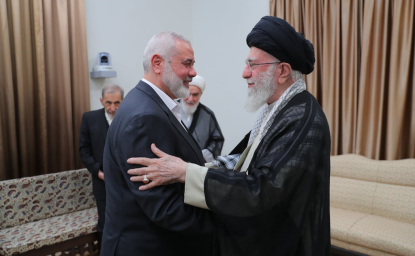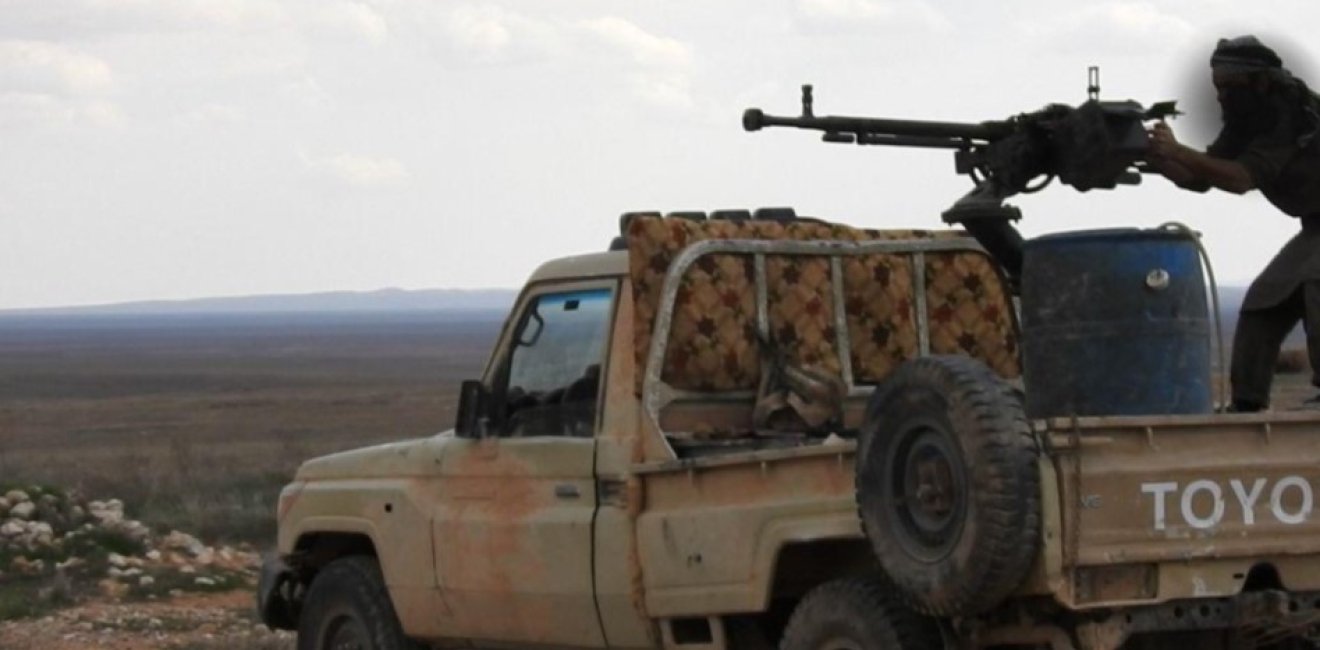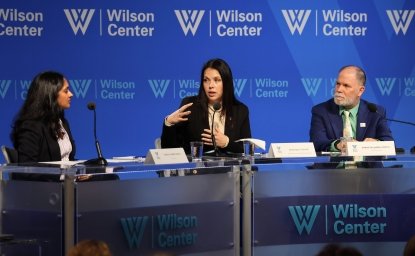By Andrew Hanna
In April 2020, the Islamic State launched new offensives in Iraq and Syria as the coronavirus pandemic distracted the U.S.-led coalition and local security forces. The attacks were the deadliest and most sophisticated attacks—including suicide bombings, nighttime ambushes of security forces and assassinations—since the fall of the territorial caliphate in March 2019.
“[Muslims] must have no pity for the disbelievers and the apostates even as they are at the height of their tribulation,” ISIS said on March 19 in al Naba, its weekly newsletter. “They must intensify the pressure on [disbelievers and apostates] so they become more pressured and incapable of harming the Muslims by the permission of God.”

The offensive coincided with a reduction of U.S. counterterrorism operations due to COVID-19. On March 19, the U.S.-led coalition and NATO paused their training missions to avoid large gatherings of military personnel in Iraq. The U.S. then scaled back operations against ISIS in both Iraq and Syria. Coalition troops suspended joint raids with Iraqi forces and the Kurdish-led Syrian Democratic Forces (SDF).
ISIS took advantage of the reduced pressure from the coalition. In April, ISIS launched 151 attacks in both countries – a 50 percent increase over the previous month. In May, it claimed 193 attacks. “If the pattern continues in the coming months, ISIS is likely to become a far greater threat that will be much harder to contain than it is now,” Hassan Hassan wrote in The Guardian on May 24.
The U.S.-led coalition confirmed that ISIS operations had grown more sophisticated during the pandemic. ISIS attacks, especially in Iraq, displayed “extensive pre-operational planning and preparation,” according to an inspector general report in July 2020. From March to June, ISIS attacks in Iraq were “more audacious and larger-scale” than those conducted during the first three months of the year. In Syria, ISIS briefly occupied territory held by the Syrian regime although it was unable to “target Sunni tribes writ-large,” the report said.
ISIS
During the pandemic, the ISIS propaganda campaign tried to energize fighters and followers to instigate bolder attacks. “We advise you to be harsh upon the disbeliever enemies of God,” Abu Hamza al Qurashi, the ISIS spokesman, said on May 28. “Address them with the sharp swords and ignite the expeditions and do not stop the raids. And do not let a day pass for the apostates and their Crusader masters without disturbing their life. Ambush them on the roads, burn their convoys with IEDs, destroy the checkpoints and barracks.”
As the infection spread to Europe and the United States, ISIS called the virus a ”painful torment” for all non-Muslims, particularly “Crusader nations” in the West. “The last thing they want is to send more of their soldiers to areas where the disease is likely to spread or to be compelled to mobilize security personnel and soldiers inside the land,” ISIS said on March 19.
In the March 12 issue of al Naba (“Tidings”), ISIS said that God had willed the disease against infidels. “Diseases do not infect but by the command and will of Allah.” The Islamic State warned that infidels would face the kind of violence and destruction that they had inflicted on ISIS during the caliphate. Al Qurashi said, “So just as the corpses of the monotheists were thrown in the roads by the bombing of your aircraft, and the Muslims clung to their homes in fear of your missiles, here today by the grace of God Almighty you see how the corpses of your brothers have been thrown in the roads and garbage piles, and a quarantine has been imposed on you so you do not go out from your homes.”
ISIS urged followers to avoid Europe during the epidemic to prevent infection. It quoted a hadith from Mohammed al Bukhari, one of the six major recorders of the Prophet Mohammed’s words and deeds. Muslims who quarantined during a pandemic would achieve the same status of martyrdom in the afterlife. “I asked the messenger of Allah about the plague and he told me ‘It is a torment that Allah descends on whom he wishes, and Allah made it a source of mercy for the muminin (the faithful), for if one in the time of an epidemic stays in his country patiently hoping for reward from Allah and believing that nothing will befall him except what Allah has decreed, he will get the reward of a martyr.” ISIS instead called for more operations to free ISIS prisoners in Iraq and Syria and pressure “apostate” governments.

Iraq
After the outbreak of COVID-19 in the Middle East, the Iraqi government diverted security forces from counterterrorism activities to enforce the curfew. ISIS saw an opening. Between February and May, ISIS claimed responsibility for hundreds of attacks in Iraq since the start of the pandemic. The Combating Terrorism Center at West Point recorded 566 attacks by ISIS in Iraq during the first quarter of 2020, starting before the pandemic. It was twice the total from the first quarter of 2019 but roughly the same as in 2012, during the initial rise of ISIS.
ISIS operated in less populated, rural areas more hostile to the U.S. and the Iraqi government. “It is counting on the fact that the Iraqi security forces and the coalition can be deterred from going into those areas,” Mike Knights said at The Washington Institute for Near East Policy on May 29.
ISIS shifted its tactics from basic kidnapping and shake-downs of local officials to more brazen car bombs, roadside ambushes, sniper attacks and suicide bombings of police and military forces, the Iraqi military reported. In April 2020, ISIS increased military operations in Kirkuk province by 200 percent; it conducted almost daily attacks in Diyala province, according to the Middle East Institute. Its attacks were also deadlier. In one particularly gruesome operation on May 2, Islamic State militants killed six members from the Popular Mobilization Forces in a firefight; three reinforcements were then killed by a roadside bomb planted by ISIS near the city of Samarra.
The United States has acknowledged the escalation. “The recent flurry of ISIS activity has been met by a blizzard of Iraqi Security Forces tactical operations,” Col. Myles B. Caggins III, the spokesman for the U.S.-led coalition, said in a press release. In response to the Samarra attack, Iraqi security forces launched simultaneously raids on ISIS cells in Kirkuk, Ninevah and Anbar provinces. They killed five ISIS fighters, destroyed a desert hideout and confiscated a weapons cache in a single day.
But ISIS ridiculed Iraqi security forces and their counterterrorism efforts. “Your false delusional media claims will not benefit you or your campaigns and claimed victories,” the ISIS spokesperson said on May 28. “What has struck you during the past weeks at the hands of the soldiers of the Caliphate is but a small part of a vast amount.”

Syria
During the pandemic, ISIS increased military operations in Syria against both the U.S.-backed Syrian Democratic Forces in the northeast and government security forces in the central desert region. Both areas had been part of the Islamic State’s caliphate between 2014 and 2019. The escalation was striking because it followed a sharp decline in the number of attacks—down by 55 percent—from January to March. The new ISIS offensives were launched in April.
ISIS’s tactics mirrored its operations in Iraq. The methods shifted from attacking military checkpoints and kidnapping local mukhtars and village officials to assassinations, multi-pronged ambushes and bombings of the SDF and government troops. In one particularly deadly incident on April 9, ISIS fighters ambushed Syrian troops near Palmyra. The battle raged for two days; the regime called on Russian airpower for air support. More than 30 Syrian troops were killed.
ISIS mocked the Assad regime for its heavy losses. “Your convoys go out to fight us and do not return, being seized by ambushes and detachments of the lions,” the ISIS spokesperson said.
The pandemic undermined the Syrian government’s efforts to contain the jihadist threat emanating from ISIS safe havens in the Badia, a sparsely-population desert region in central Syria. “The #Assad regime is demonstrably incapable of defeating, let alone containing #ISIS there & in the months to come, this will be where #ISIS grows,” Charles Lister tweeted on April 1.
ISIS operations in SDF-controlled areas were also bolder than any time since the movement was forced underground after the fall of the caliphate in 2019. In Raqqa, fighters attacked the SDF base and young religious jihadis intimidated shop owners who employed women. “These operations show that ISIS faces few restrictions on its movement and presence; it likely gained more freedom after coronavirus-related measures restricted residents’ movement and focused attention on containing the pandemic,” Abdullah al Ghadhawi, a Syrian analyst from Deir Ezzor, wrote for the Center on Global Policy.

U.S. Response
COVID-19 hampered the U.S. ability to respond to ISIS. In mid-March, the U.S. suspended training exercises in Iraq and withdrew from three of eight bases. “Looking ahead, we anticipate the Coalition supporting the Iraqi Security Forces from fewer bases with fewer people,” the U.S.-led coalition announced. On March 20, U.S. Central Command also halted all military travel to the Middle East and said any American personnel entering the region were screened for the virus and quarantined for 14 days.
“Prepare to confront [us] face to face after your American masters have begun to withdraw their forces from Iraq,” the ISIS spokesperson said to Iraqi security forces.
U.S. military operations in Iraq and Syria were limited largely to airstrikes and drone surveillance. On May 2, the coalition bombed an ISIS cave complex that was a major hide-out in northeast Iraq. On May 26, a U.S. airstrike on Deir Ezzor killed Hajji Taysi (the nom de guerre of Mutaz Najm al Jaburi), a notorious bombmaker considered the ISIS “governor” of Iraq and one of the three most important ISIS leaders.
“Removing Daesh [ISIS] fighters, weapons and explosive material remains a top priority as Daesh [ISIS] continues to plot attacks against innocent civilians and our partners throughout Iraq and northeast Syria,” the U.S.-led coalition said on June 3.
U.S. hopes of stabilizing the northeast sector of Syria under SDF control was undermined by the byproducts of the pandemic. ISIS inmates took control of a prison in Hasakah province during protests over poor living conditions that exposed them to spread of coronavirus. The U.S. provided riot gear to the SDF to contain ISIS prisoners. U.S. efforts to repatriate 10,000 ISIS prisoners and more than 70,000 of their family members were also slowed. By July, the situation in the camps had deteriorated further. “The risk of a mass breakout cannot be discounted,” the coalition reported to the Pentagon inspector general.
Andrew Hanna is a research assistant at the U.S. Institute of Peace, which partners with the Woodrow Wilson Center on The Islamists.

The Islamists
Learn more about Hamas and how it relates to similarly aligned organizations throughout the region. Read more

Explore More
Browse Insights & Analysis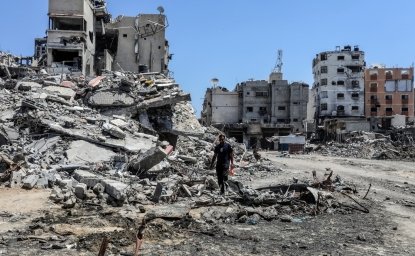
Israel Escalates Attacks in Gaza: What’s Next?
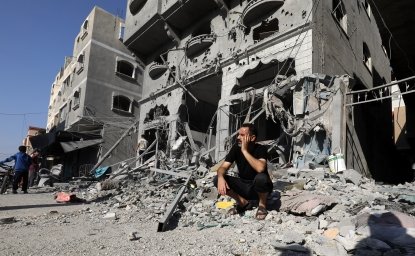
Israel Expands Operations on Multiple Fronts: Perspectives on the Conflict
